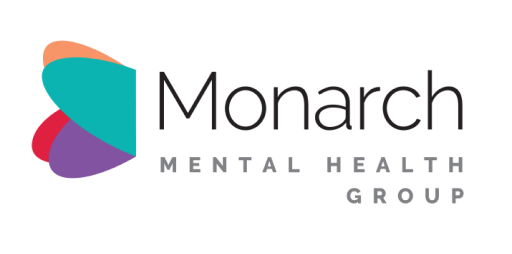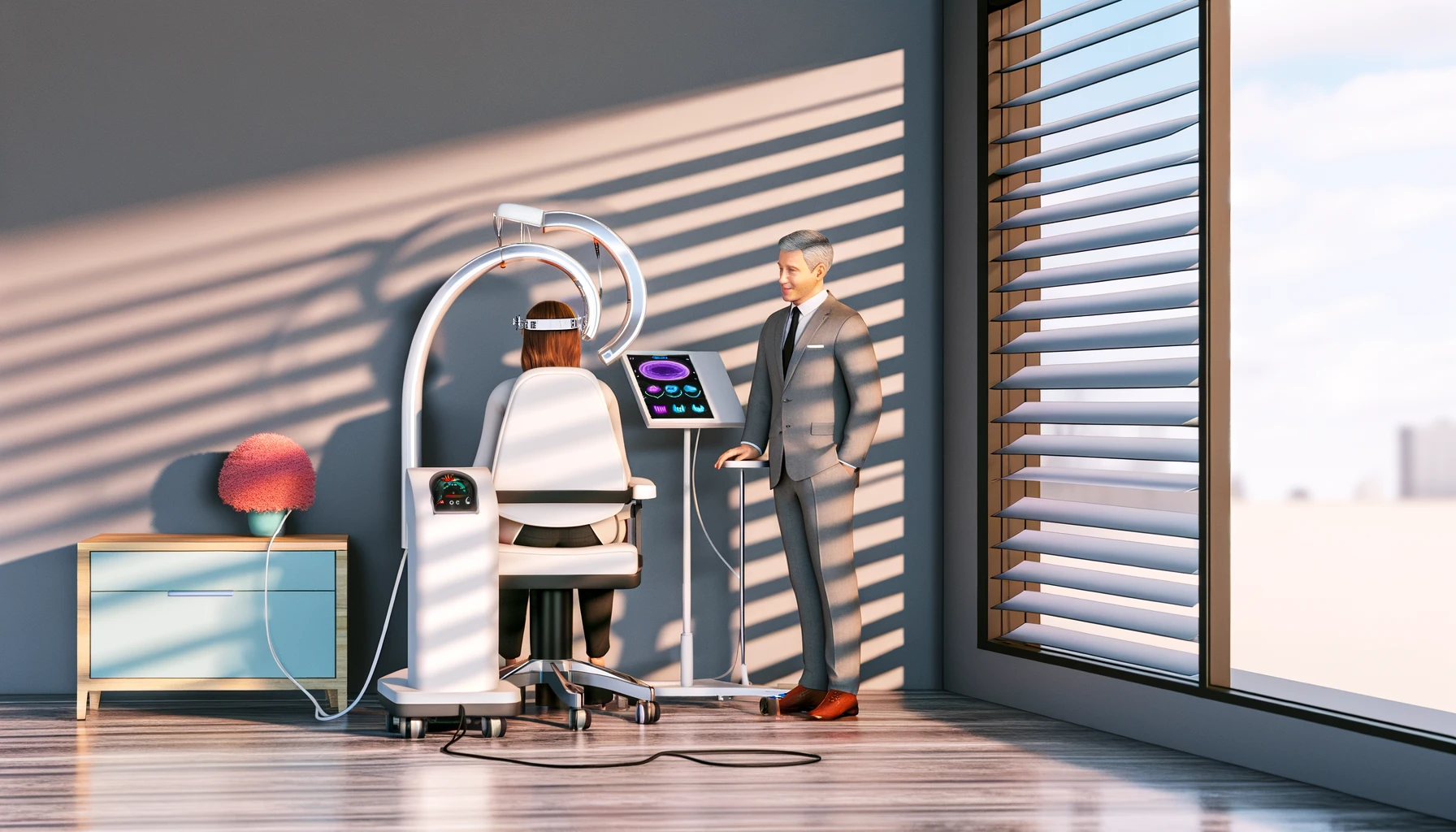Introduction
Transcranial Magnetic Stimulation (TMS) is a non-invasive brain stimulation technique that has gained prominence in recent years for its effectiveness in treating various brain-related conditions, including depression [1], OCD [2], and chronic pain [3]. Despite its growing popularity and proven efficacy for several conditions, there remain prevalent myths and concerns regarding TMS, especially when it comes to its safety and potential side effects. This article aims to delve into TMS therapy, exploring its safety, addressing common misconceptions, and offering an overview of what to expect.
Understanding TMS
TMS is a non-pharmacological and non-surgical procedure used to stimulate specific regions of the brain. During a TMS session, a coil is placed near the scalp, and it generates brief and focused magnetic pulses. These pulses pass through the skull and induce electrical currents in the underlying neural tissue, specifically targeting the brain regions associated with the condition the individual is having treatment for. The induced currents trigger localised brain cells, influencing their firing patterns. Through repetitive sessions, TMS can lead to lasting changes in brain activity and connectivity. That is, changes in how brain regions function and how they communicate with each other. The non-invasive nature of TMS, its precision, and the ability to adjust the treatment to each individual’s specific needs make it a promising avenue for people seeking alternative therapeutic options.
TMS Safety
One of the most significant advantages of TMS is its excellent safety profile [4]. Here are some key points to consider:
- Non-Invasive: TMS is entirely non-invasive, which means there are no surgical incisions or injections involved. This characteristic sets it apart from conventional treatments, which are often associated with significant risks and invasive medical procedures.
- Minimal Discomfort: While TMS may cause some discomfort during the procedure, it is usually well-tolerated. Many patients describe it as a tapping or clicking sensation on the scalp.
- No Medication: Unlike many treatments for neuropsychiatric conditions, TMS doesn't involve medication, eliminating the risk of potential side effects associated with drugs.
- Low Risk of Systemic Side Effects: Because TMS is localized to the brain, it doesn't carry the risk of widespread side effects often associated with medications or more invasive procedures.
Dispelling Common Myths.
The following section addresses some of the common myths and misconceptions regarding TMS:
- Myth 1: TMS is painful
Fact: While TMS may cause discomfort, it is generally not painful in the vast majority of people. Most patients find the sensations manageable, and the procedure is well-tolerated. The sensation is often described as similar to the feeling of light tapping on the scalp. In the few who do find the sensation very uncomfortable or painful, this sensation is only briefly present during the TMS pulses. It also often lessens over time.
- Myth 2: TMS is risky
Fact: TMS has a low-risk profile. Serious adverse events are exceedingly rare. The most common side effect of TMS is mild scalp discomfort during the treatment sessions. This discomfort usually subsides quickly after the session ends. There is a very low risk of systemic side effects or long-term adverse effects. It is considered safe for most individuals, with only a few contraindications, such as the presence of certain metal objects in the body or a history of seizures.
- Myth 3: It is just like electroconvulsive therapy (ECT)
Fact: While both TMS and ECT are types of brain stimulation that can be used to treat depression, the similarities end there. ECT involves the administration of electrical currents to deliberately induce seizures, necessitating the use of anaesthesia and thereby requiring substantial amounts of time for their brain and body to recover. TMS operates by applying focused magnetic fields to specific brain regions, modulating neural activity without the need for anaesthesia or any recovery periods.
- Myth 4: The effects wear off
Fact: Over the last two decades, numerous studies have consistently demonstrated the efficacy of TMS therapy in the treatment of depression. Notably, this improvement in depressive symptoms has been observed to endure for at least one year following the cessation of treatment in many patients, and in some cases, this positive effect can persist even longer [5]. This enduring effect underscores the remarkable potential of TMS therapy to confer long-lasting benefits.
- Myth 5: TMS treatments take too much time
Fact: Given that TMS sessions are typically conducted in an outpatient setting, they are remarkably efficient. Your initial appointment may span around one hour, but subsequent sessions are streamlined, taking less than 30 minutes. As the recognition and availability of TMS continue to expand, more clinics are now offering this therapy, often allowing patients the convenience of reducing travel time by scheduling sessions at a nearby clinic. One of the notable advantages of TMS is its minimal disruption to daily life, as it does not necessitate any recovery period. This means you can drive home after the session, making it a time-efficient and accessible treatment option.
Addressing Concerns
While TMS is generally safe, it is essential to consider individual factors and potential concerns. Here are some aspects to keep in mind:
- Pre-Treatment Evaluation: Prior to starting TMS, a thorough evaluation by a medical professional is conducted. This helps identify any contraindications or factors that might necessitate caution or may mean you are unable to have TMS.
- Individualised Treatment Plans: TMS treatment plans are customized to each patient's needs and condition. This personalisation ensures that the treatment is as safe and effective as possible.
- Professional Supervision: TMS is administered by trained professionals who closely monitor the treatment process to address any concerns promptly.
- Rare Side Effects: While serious side effects are rare, it's essential to be aware of them. These can include seizures, which are extremely uncommon and often related to specific risk factors.
- Maintenance and Follow-Up: Regular follow-up and, if necessary, maintenance sessions play a crucial role in upholding the long-term safety and effectiveness of TMS treatment.
Conclusion
TMS is a safe and effective treatment option for various brain-related conditions. It offers a non-invasive alternative to traditional treatments and medications, with minimal discomfort and a low risk of side effects. By dispelling myths and addressing concerns, we hope to provide a better understanding of TMS and its place in modern healthcare. If you or a loved one is considering TMS, it's crucial to consult with a healthcare professional who can provide personalised guidance and answer any specific questions or concerns you may have. TMS represents a promising step forward in the field of neuropsychiatric treatment, offering hope and relief to individuals facing mental health challenges.
Click here if you would like to find out more about being referred to our clinics for TMS
Book an Initial Consultation with Our Experienced Psychiatrists
References
[1] J. P. O’Reardon et al., "Efficacy and safety of transcranial magnetic stimulation in the acute treatment of major depression: a multisite randomized controlled trial," Biological psychiatry, vol. 62, no. 11, pp. 1208-1216, 2007.
[2] M. P. N. Perera, S. Mallawaarachchi, A. Miljevic, N. W. Bailey, S. E. Herring, and P. B. Fitzgerald, "Repetitive Transcranial Magnetic Stimulation for Obsessive-Compulsive Disorder: A Meta-analysis of Randomized, Sham-Controlled Trials," Biological Psychiatry: Cognitive Neuroscience and Neuroimaging, vol. 6, no. 10, pp. 947-960, 2021.
[3] N. E. O'Connell, L. Marston, S. Spencer, L. H. DeSouza, and B. M. Wand, "Non‐invasive brain stimulation techniques for chronic pain," Cochrane database of systematic reviews, no. 3, 2018.
[4] S. Rossi et al., "Safety and recommendations for TMS use in healthy subjects and patient populations, with updates on training, ethical and regulatory issues: Expert Guidelines," Clinical Neurophysiology, vol. 132, no. 1, pp. 269-306, 2021.
[5] D. L. Dunner et al., "A multisite, naturalistic, observational study of transcranial magnetic stimulation for patients with pharmacoresistant major depressive disorder: durability of benefit over a 1-year follow-up period," The Journal of clinical psychiatry, vol. 75, no. 12, p. 12379, 2014.

